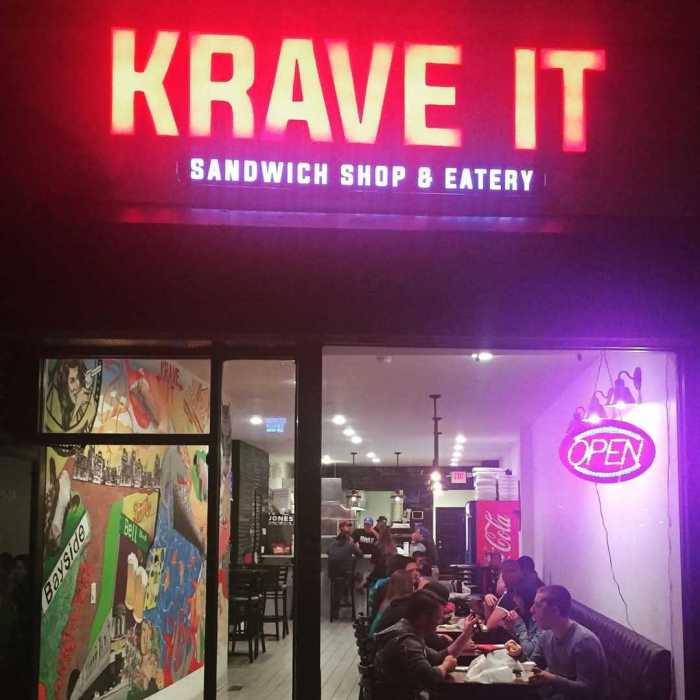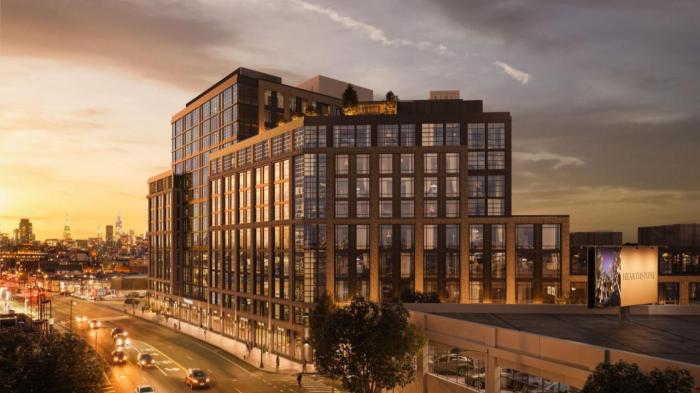Spreading inland along the coast of the East River are the western Queens neighborhoods of Astoria, Long Island City and Sunnyside – once dismissed with a “Where?” by Manhattanites – that now make up some of the hottest, the coolest and most sought after spots in the city.
These bustling avenues and shady streets feature everything from skyscrapers to cozy homes with community gardens; a man-made beach and a City University college; two movie studios and two beer gardens; parks, museums, art galleries and live-performance theatres.
Taken together, with more than 310,000 people by some estimates, this expanse of diversity, graced with the world’s most famous skyline view, would vie for a spot on the list of 50 largest U.S. cities.
On these streets and in these parks are more restaurants, shops and points of interest than the average person could explore in a lifetime – and more languages than can be heard anywhere on the planet, outside of just about any place in Queens, of course.
Astoria, the new powerhouse
Astoria is the northwestern-most neighborhood in Queens, running roughly from the KeySpan Energy Ravenswood Plant at to Broadway and from the East River to the LaGuardia Airport and the Brooklyn Queens Expressway.
The area is best known as the home of large immigrant communities of Greek, Italian, Irish, Mexican, Dominican, Puerto Rican and other Central Americans, with a more recent influx of Middle Eastern, particularly Egyptian descent.
North of the Grand Central Parkway/RFK Bridge approach, the area is also known as Ditmars and is the heart of the Greek community. Contained within Ditmars is Steinway, surrounding the Steinway & Sons Piano factory – from the northerly side of Ditmars Boulevard, between 31st and Hazen Streets.
The real energy in Astoria can be found along its commercial strips, notably 31st Street, where the elevated N and Q trains rumble over shops, restaurants, cafes and bars of every description.
Ditmars Boulevard, Steinway Street and Broadway are also commercial arteries, though shopping and dining/drinking opportunities abound on most of the avenues. These range from the beer gardens to hookah bars, where strong coffee and tobacco rather than beer, wine and spirits are the star attractions.
Astoria boasts Kaufman Astoria Studios at 34th Avenue and 36th Street, which also houses the Astoria Performing Arts Center, and the Museum of the Moving Image a block away at 35th Avenue and 36th Street.
The Greek Cultural Center hosts events in its new home at 126-80 30th Street and the Astoria Israel Center hosts cultural activities at 27-35 Crescent Street.
Long Island City- the heart of it all
If you wanted to point to an area that is reinventing itself as a vibrant urban center, Long Island City is a good choice.
From the reclaimed industrial bank of the East River that now boasts a public beach, a concert venue, walks, lookouts and parkland – to the 19th Century powerhouse that swapped its smokestacks for state of the art condominiums, this is a neighborhood on the move.
When then-Citi Bank erected a glass-and-steel skyscraper near Court House Square, it seemed out of place. Since then, Long Island City has sprouted its own skyline of residential towers.
With the influx of mostly young and discerning residents, shops and restaurants are springing up to cater to the new neighbors. The demands posed by young families are leading to expanded library and school facilities.
The Arts can be found all over – the Performing Arts Center in LaGuardia Community College or the Secret Theatre; Art Exhibitions at PS1 or the Noguchi Museum or Public Art in Socrates Sculpture Garden.
Then there are dozens of studio spaces that open their doors during the annual Queens Arts Express, centering under the No.7 train.
The Sunnyside of the street
To the east of Long Island City, set off by the sprawling namesake railroad yards is Sunnyside. The neighborhood stretches southward from the yards to the Long Island Expressway, from 31st Street to 52nd Street and the New Calvary Cemetery.
Originally settled as a pastoral community, the Queensborough Bridge and No. 7 led to the development of the neighborhood by the 1920s.
While the outdoor arena that saw a World Heavyweight Boxing Championship or the arena where Roller Derby and professional Wrestling enjoyed their Golden Age are long gone, Sunnyside boasts the Thalia Theatre, the only Spanish-language theatre in the borough and a haven for lovers of Flamenco.
Sunnyside Gardens is a forested enclave of some 1,500 attached brick one- two- and three-family houses that share common courtyards yet have private back yards. It holds a rare distinction in the City of New York, being one of only two neighborhoods in the five boroughs whose residents have a private park – the other being Gramercy in Manhattan.
It lies, for the most part, between Queens Boulevard and Bartlett Avenue along the Long Island Rail Road easement, between 43rd and 52nd Streets.
Built in the mid-1920s, the area has retained much of its original charm as the first “Garden Apartment” development in the United States and was designated a Landmark neighborhood in 2007, after a long and heated controversy among the residents.
Residents observe a day of remembrance and fair every Memorial Day weekend.



































